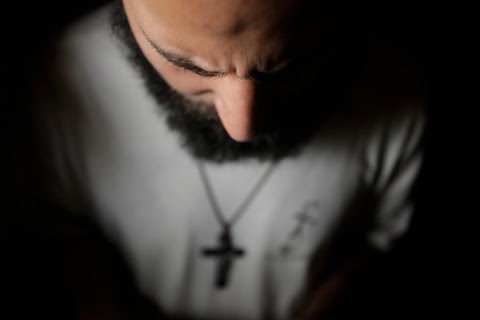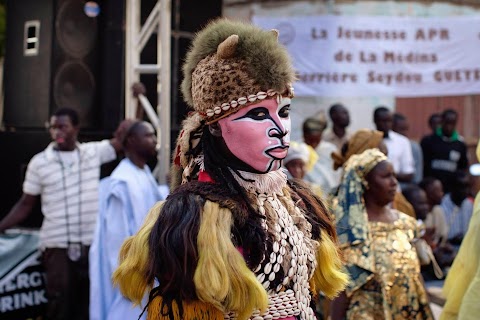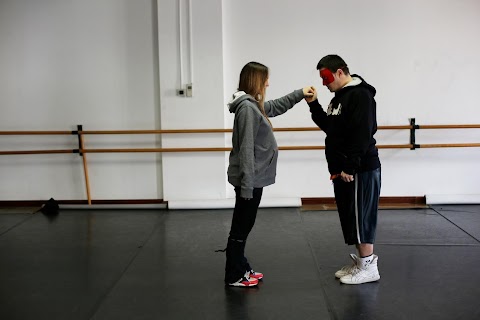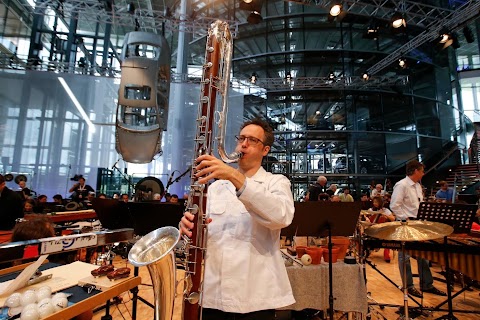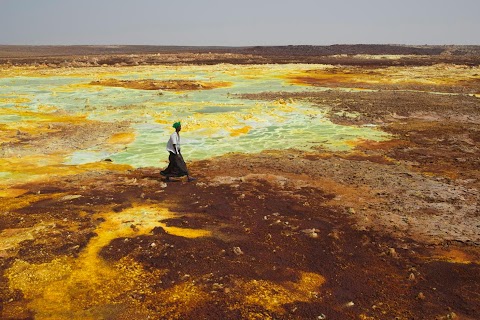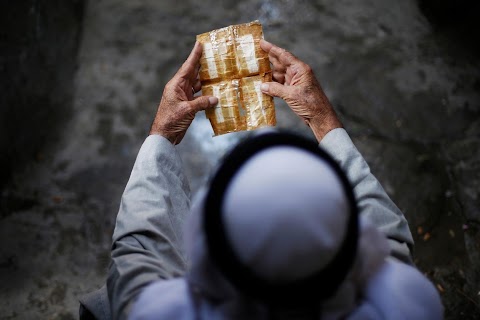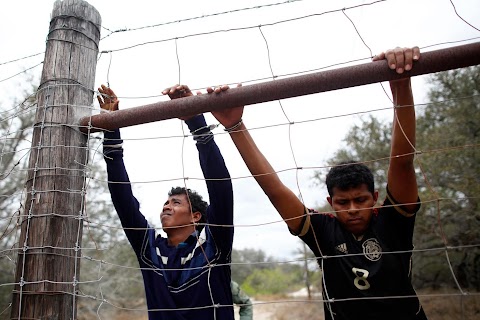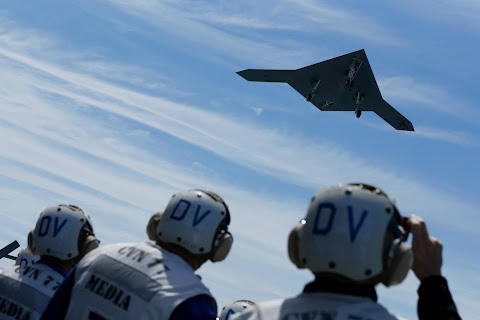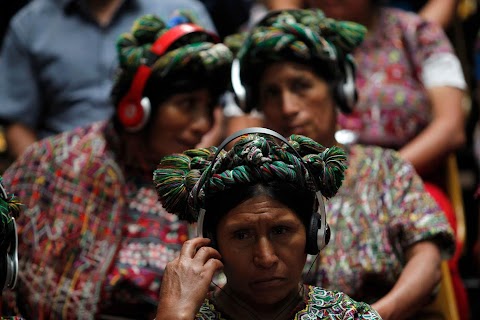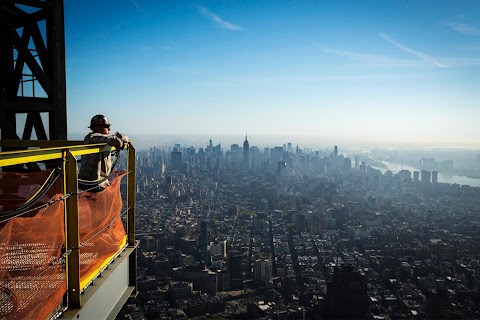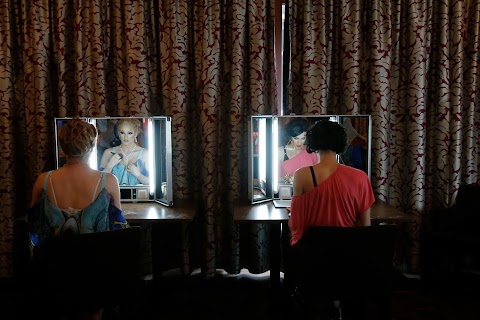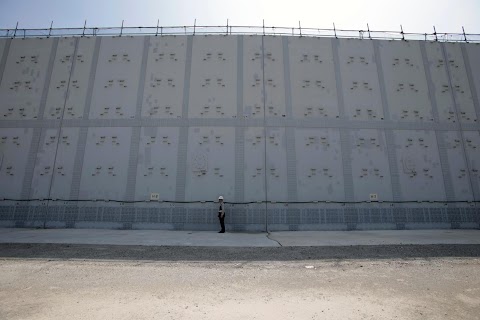
Japan's nuclear tsunami wall
 Toru Hanai
Toru Hanai
A worker stands in front of a tsunami defence wall at Hamaoka nuclear power station.
Tokyo based photographer Toru Hanai was granted exclusive access to Chubu Electric Co’s only nuclear plant to see anti-disaster improvements designed to protect the site from tsunami and earthquakes, such as the one that devastated the Fukushima Daiichi nuclear plant in 2011.

Chubu Electric, Japan’s third-biggest utilities company, is spending at least $1.5 billion on anti-disaster improvements at Hamaoka nuclear plant. The station’s three reactors enter a third year of shutdown this month and Chubu Electric is spending $3 billion a year to replace the lost capacity.
Slideshow

Chubu Electric Power Co's Hamaoka nuclear power station is seen through a window in Omaezaki, south west of Tokyo.

A construction worker stands on the 18-meter (60 ft) high and 1.6 km (1 mile) long tsunami defence wall at the Hamaoka plant.

Workers open a strengthened door to the No.4 reactor building.

Signs, which read "Controlled area. Authorized person only" and "Door must remain closed at all times”, are seen at the plant.

A Good Design Award plate (top) is seen as employees work at the central control room of the No.5 reactor.

An employee opens a watertight door to an emergency electric panel room in the No.4 reactor building.

An employee walks down a passageway at the plant.

An employee walks through an emergency electric panel room in the No.4 reactor building.

An employee works in the central control room of the No.5 reactor.

Workers stand beside removable top shields for the reactor (centre) and a spent fuel pool (left) at the plant.

A worker stands on the top floor of the No.5 reactor building at Hamaoka nuclear power station.

A worker stands on the top floor of the No.5 reactor, as visitors are reflected in a window.

A man walks on a sand dune near the Hamaoka plant.

Wind turbines at Chubu Electric Power Co's Omaezaki wind power station are seen in the distance.
"I got wet through – fortunately it was only me. The camera was safe."
Chubu Electric Power Co's Hamaoka Nuclear Power Station in Japan is located at water level next to a beach. It is also widely reported to be one of the world's most dangerous nuclear plants as it sits close to a major fault line. Not unlike the one that caused the Fukushima nuclear disaster.
I had an offer of an exclusive tour of Chubu Nuclear Power Station where an 18-meter (60 ft) high and 1.6 km (1 mile) long tsunami defense wall has been built at a cost of $1.3 billion.
Being located beachside I immediately thought of basing the main photo for this trip on the famous “ukiyoe” print by the artist Hokusai: The Great Wave off Kanagawa.
Hokusai (1760-1849) was a ukiyoe painter and printmaker during the Edo period. I guess many people have seen this ukiyoe print.
I left Tokyo early with waders for fishing and a compact digital camera in a waterproof housing to get the photo I wanted. I was in time for the high tide.
I entered the sea with my compact camera protected by its housing and my most favorite camera, a Canon 5D MKIII. The waves moved much more quickly than they appeared to from land. It was so strong it was hard to stand, much less take a photograph.
Wonderful white waves crashed only a little in front of me, and I moved towards them for the picture regardless of the danger to my equipment.
The white spray lasted for only an instant. I had to decide whether to aim for "a good photograph" with my waterproof compact camera which is less responsive, or choose the more responsive camera and risk drowning it?
I chose to use my 5D MKIII.
Photographers get absorbed in their work when a good subject is in front of them.
A good wave came.
It crashed into a pillar standing in the sea and splashed high enough to hang over the building of No. 5 reactor. The wave crashed on me, too.
I got wet through – fortunately it was only me. The camera was safe.

"The Great Wave off Kanagawa" by Hokusai (1760-1849).

The Hamaoka nuclear power station is seen behind waves crashing on a nearby beach.
